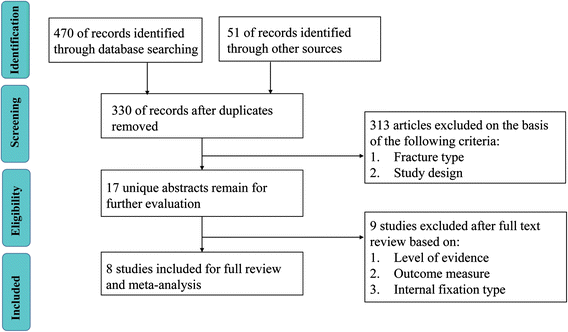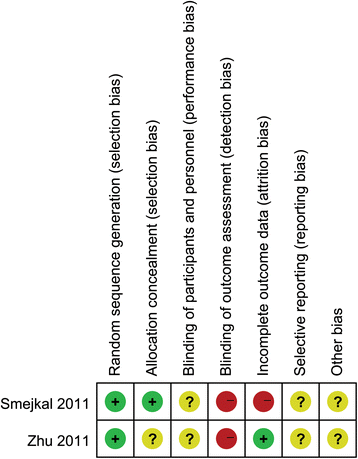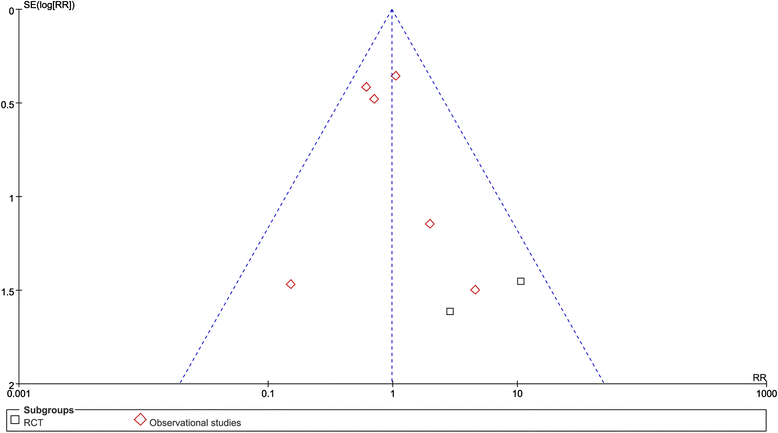Meta-analysis of locking plate versus intramedullary nail for treatment of proximal humeral fractures
- PMID: 26370230
- PMCID: PMC4570456
- DOI: 10.1186/s13018-015-0242-4
Meta-analysis of locking plate versus intramedullary nail for treatment of proximal humeral fractures
Abstract
Purpose: This meta-analysis compared the clinical outcomes of locking plate with intramedullary nail in the treatment of displaced proximal humeral fractures.
Methods: We searched PubMed, Embase, and the Cochrane databases for studies comparing locking plate and intramedullary nail treatment of displaced two-, three-, or four-part proximal humeral fractures. The quality of the studies was assessed, and meta-analysis was performed using the Cochrane Collaboration's REVMAN 5.1 software.
Results: A total of 615 patients from eight studies were included in this meta-analysis (348 fractures treated with locking plate and 267 with intramedullary nail). Similar Constant scores were observed between the locking plate and intramedullary nail both in randomized controlled trials (RCTs) (mean difference (MD) = 2.12, 95% confidence interval (CI), -2.54 to 6.79, P = 0.37) and observational studies (MD = -1.93, 95% CI, -4.95 to 1.09, P = 0.21). Only one RCT provided American Shoulder and Elbow Surgeons Standardized scores indicating that the locking plate was better than the intramedullary nail (MD = 7.20, 95% CI, 1.29-13.11, P = 0.02). The total complication rate did not specifically favor the locking plate or intramedullary nail both in the RCTs (risk ratio (RR), 2.44; 95% CI, 0.35-16.78; P = 0.37) and observational studies (RR, 1.01; 95% CI, 0.72-1.43; P = 0.94).
Conclusions: In the existing literature, limited evidence suggests that the locking plate and intramedullary nail are both valuable options for the treatment of proximal humeral fractures. Because of the observed heterogeneity and variance between the subgroups, more RCT are needed to be able to definitively recommend a locking plate or intramedullary nail for specific fracture patterns.
Figures





References
-
- Handoll HH, Ollivere BJ. Interventions for treating proximal humeral fractures in adults. The Cochrane database of systematic reviews. 2010:CD000434. doi: 10.1002/14651858.CD000434.pub2. - PubMed
Publication types
MeSH terms
LinkOut - more resources
Full Text Sources
Other Literature Sources
Medical

